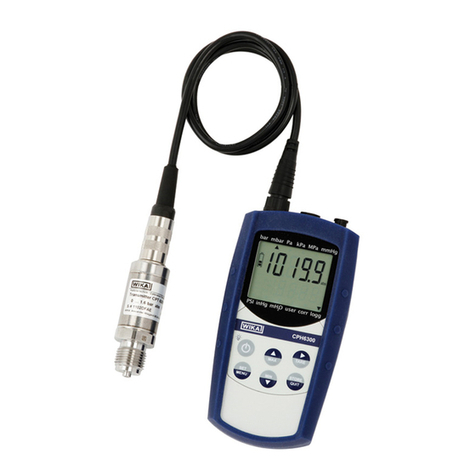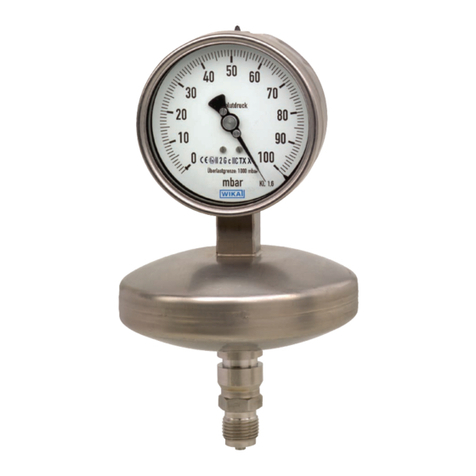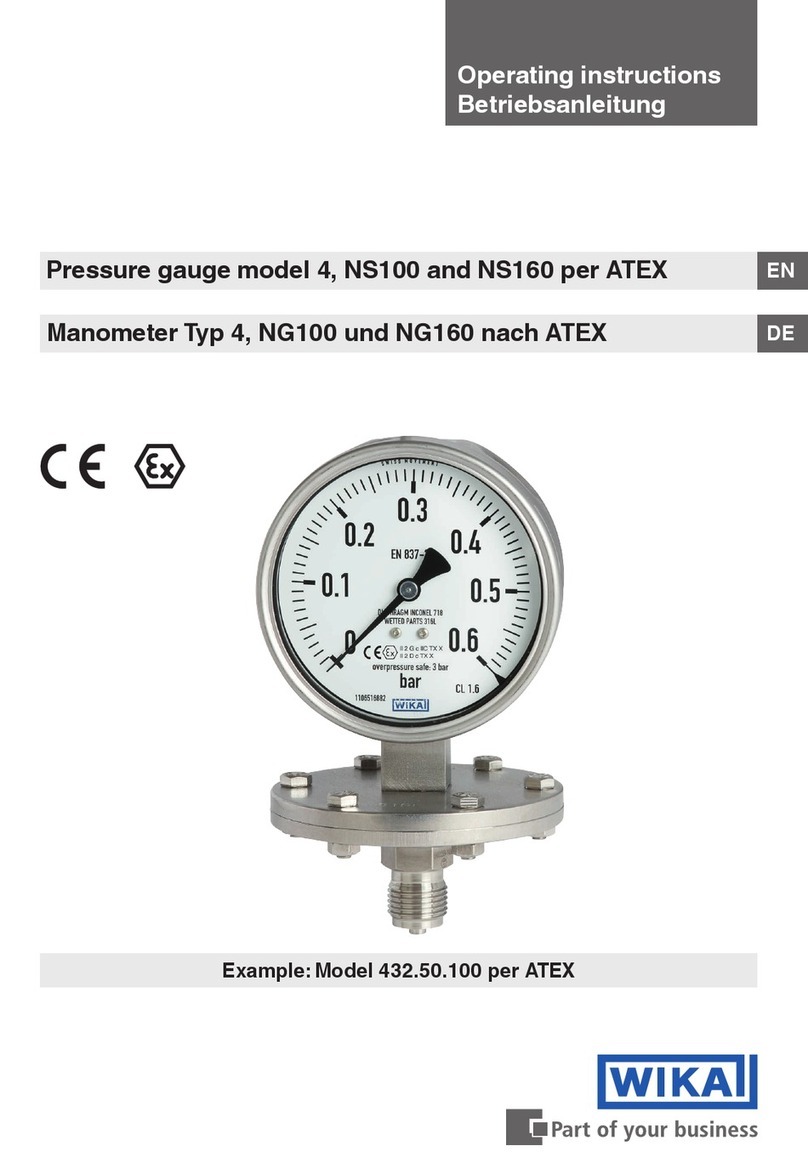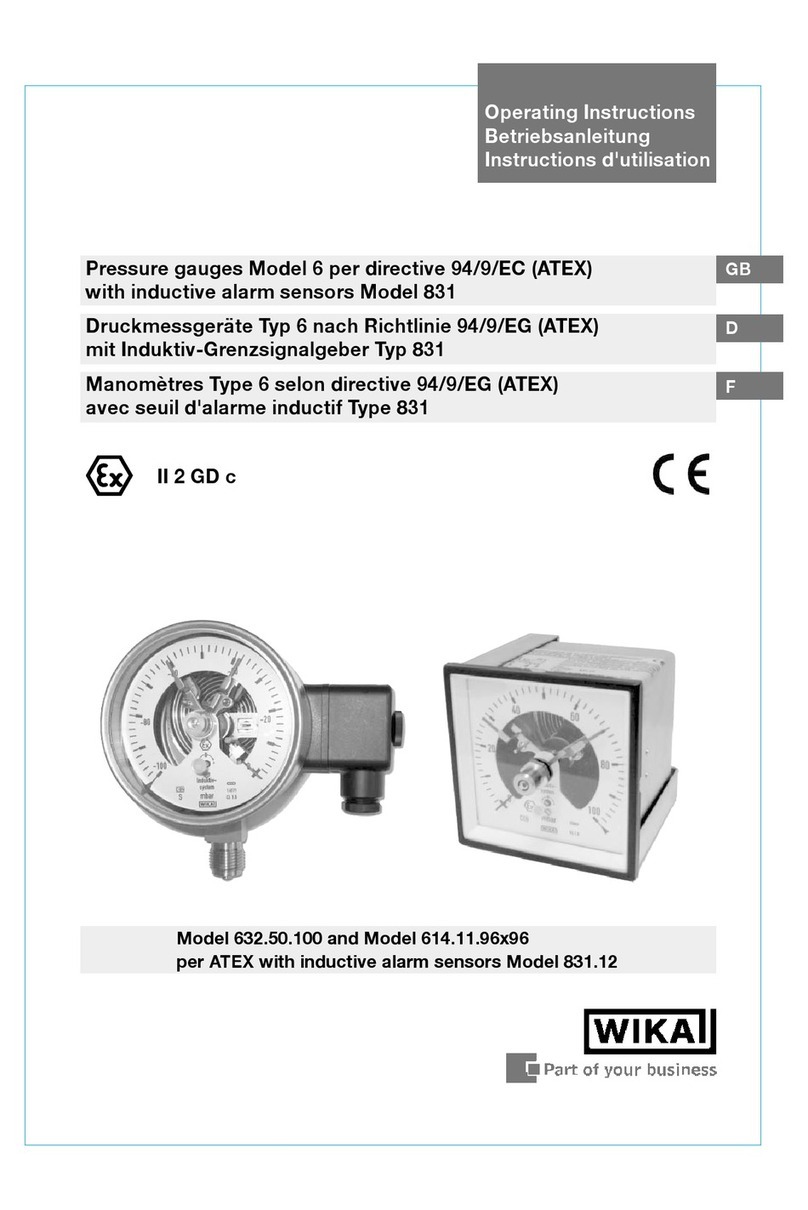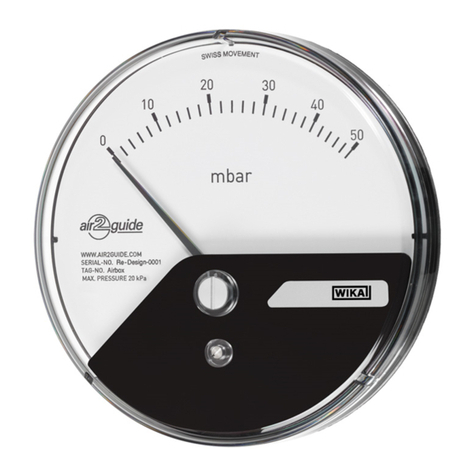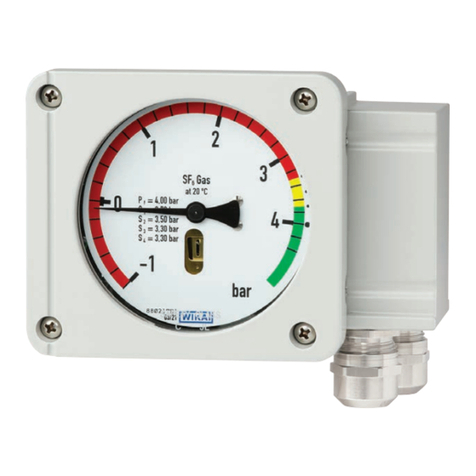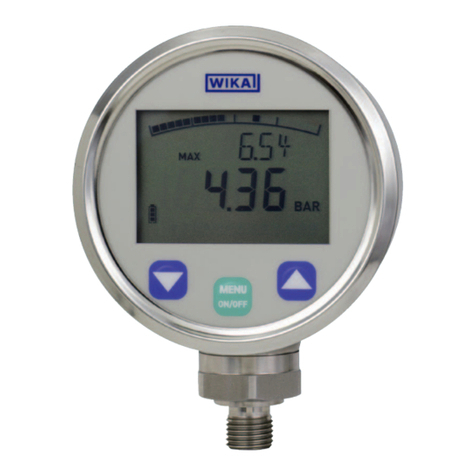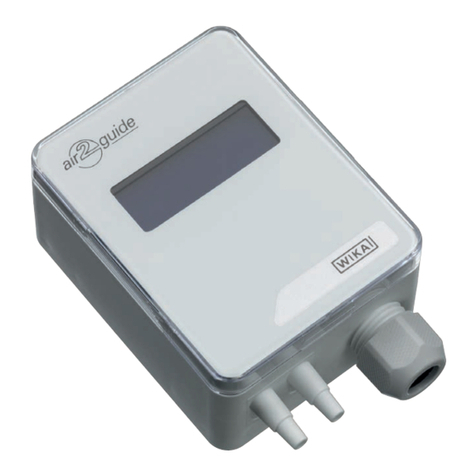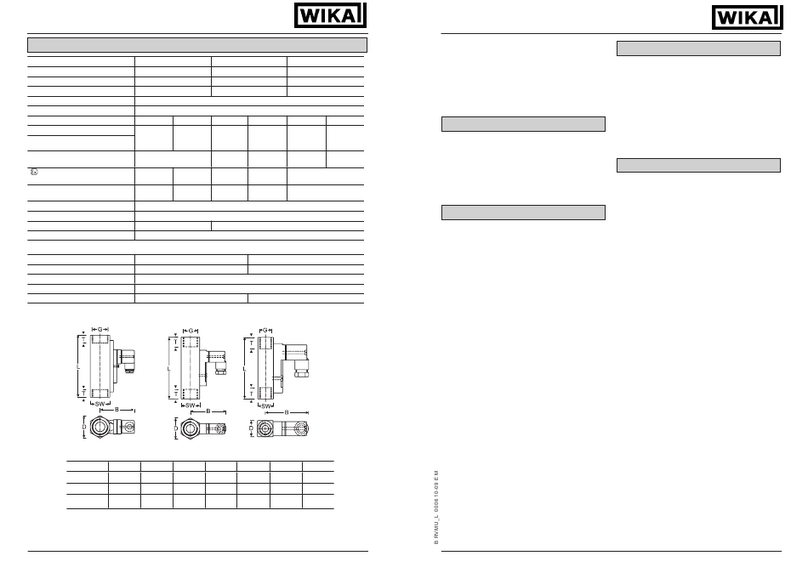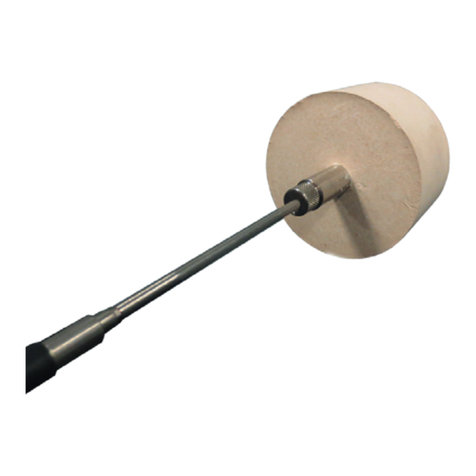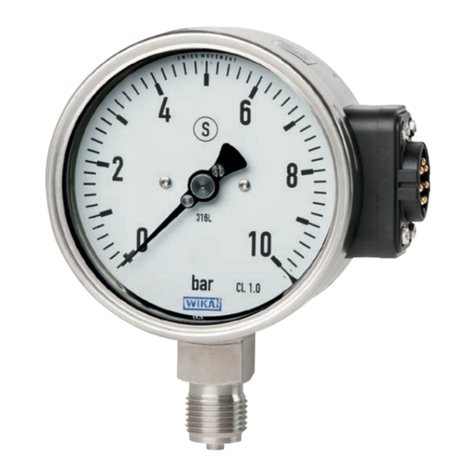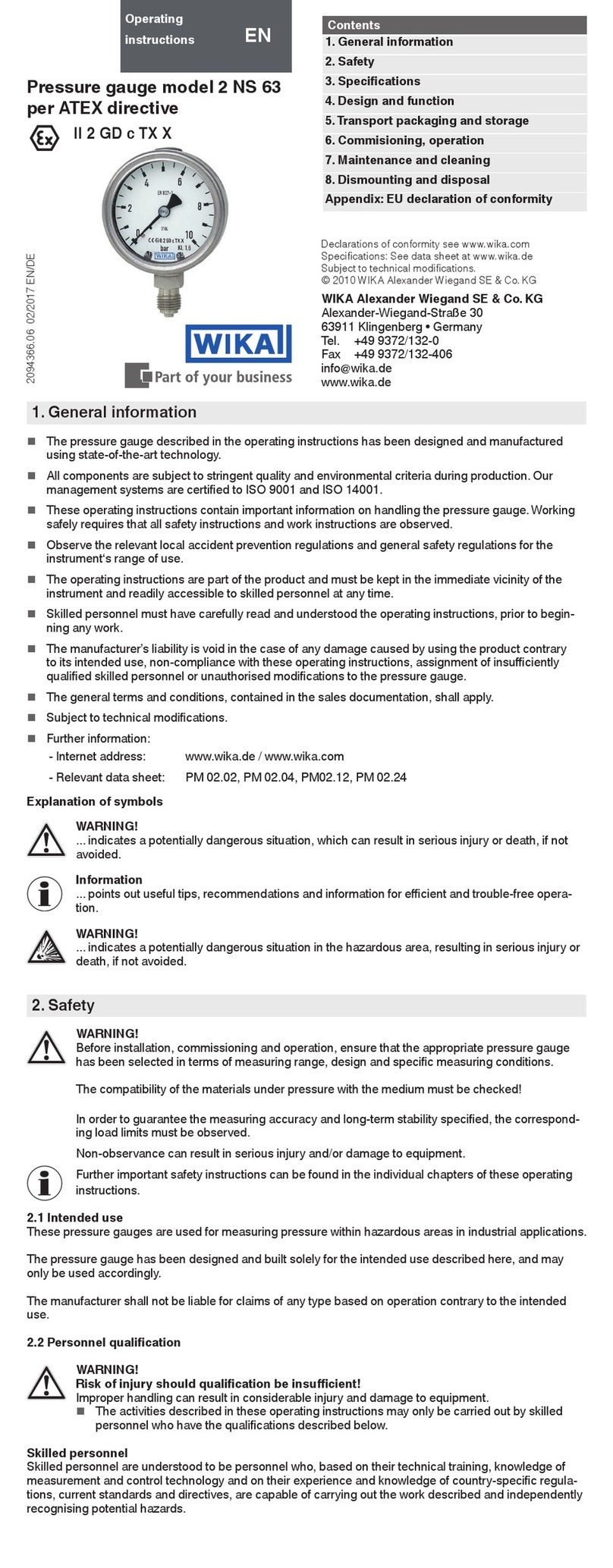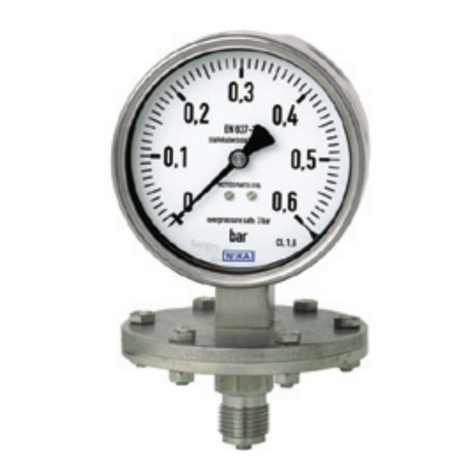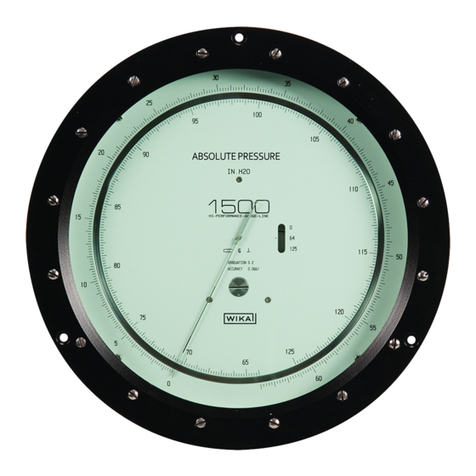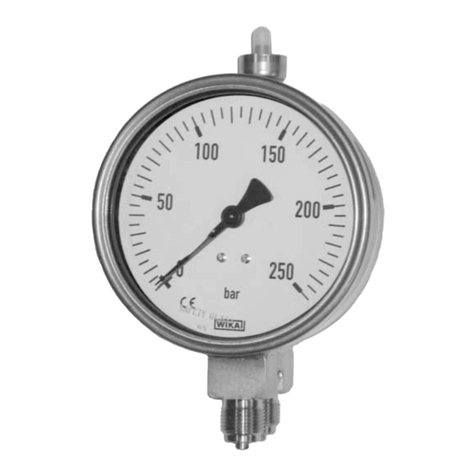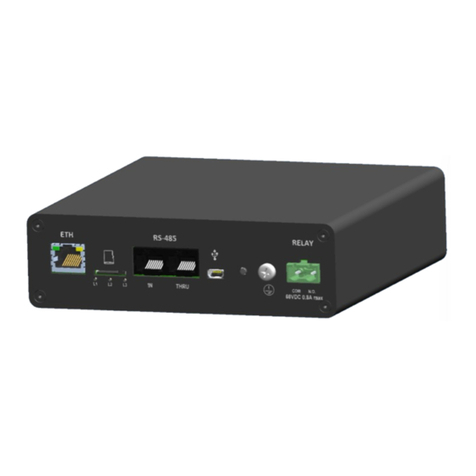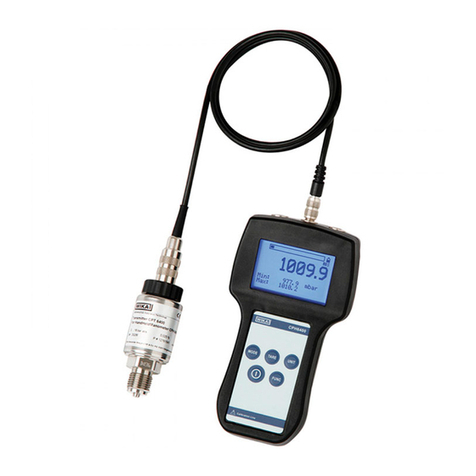
6Mensor operating instructions Pressure verification system, Model 9476
EN
from the date of shipment. No other express warranty is given, and no affirmation of Seller, by words or actions, shall constitute
a warranty. SELLER DISCLAIMS ANY IMPLIED WARRANTIES OF MERCHANTABILITY OR FITNESS FOR ANY PARTICULAR
PURPOSES WHATSOEVER. If any defect in workmanship or material should develop under conditions of normal use and service
within the warranty period, repairs will be made at no charge to the original purchaser, upon delivery of the product(s) to the
factory, shipping charges prepaid. If inspection by Mensor or its authorized representative reveals that the product was damaged
by accident, alteration, misuse, abuse, faulty installation or other causes beyond the control of Mensor, this warranty does not
apply. The judgment of Mensor will be final as to all matters concerning condition of the product, the cause and nature of a defect,
and the necessity or manner of repair. Service, repairs or disassembly of the product in any manner, performed without specific
factory permission, voids this warranty.
MENSOR MAKES NO WARRANTY OF ANY KIND WITH REGARD TO THIS MANUAL, INCLUDING, BUT NOT LIMITED TO, THE
IMPLIED WARRANTIES OF MERCHANTABILITY AND FITNESS FOR A PARTICULAR PURPOSE. Mensor shall not be liable for
errors contained herein or for incidental or consequential damages in connection with the furnishing, performance, or use of this
material.
1.2.1 FCC Emission Notice
This equipment has been tested and found to comply with the limits for a Class B digital device, pursuant to part 15 of the FCC
Rules.These limits are designed to provide reasonable protection against harmful interference when the equipment is operated in
a residential environment.This equipment generates, uses, and can radiate radio frequency energy and, if not installed and used in
accordance with the instruction manual, may cause harmful interference to radio communications.
1.2.2 CE Emission Notice
This equipment is of the emission class B, intended for operation in industrial, residential or commercial environments.
1.3 Software License Agreement
This product contains intellectual property, i.e. software programs, that are licensed for use by the end user/customer (hereinafter
“end user”).
This is not a sale of such intellectual property.
The end user shall not copy, disassemble or reverse compile the software program.
The software programs are provided to the end user “as is” without warranty of any kind, either express
or implied, including, but not limited to, warranties of merchantability and fitness for a particular purpose.
The entire risk of the quality and performance of the software program is with the end user.
Mensor and its suppliers shall not be held to any liability for any damages suffered or incurred by the end user (including, but
not limited to, general, special, consequential or incidental damages including damages for loss of business profits, business
interruption, loss of business information and the like), arising from or in connection with the delivery, use or performance of the
software program.
1.4 Mensor Service Plus
1.4.1 After the Warranty
Mensor’s concern with the performance of this instrument is not limited to the warranty period.We provide complete repair,
calibration and certification services after the warranty for a nominal fee.
1.4.2 Calibration Services
In addition to servicing our own products Mensor can perform a complete pressure calibration service, up to 30,000 psi, for all of
your pressure instruments.This service includes an accredited calibration.
1.4.3 Certifications and Accreditations
Mensor is registered to ISO 9001:2008.The calibration program at Mensor is accredited by A2LA, as complying with both the ISO/
IEC 17025:2005 and the ANSI/NCSL Z540-1-1994 standards.
General Information
